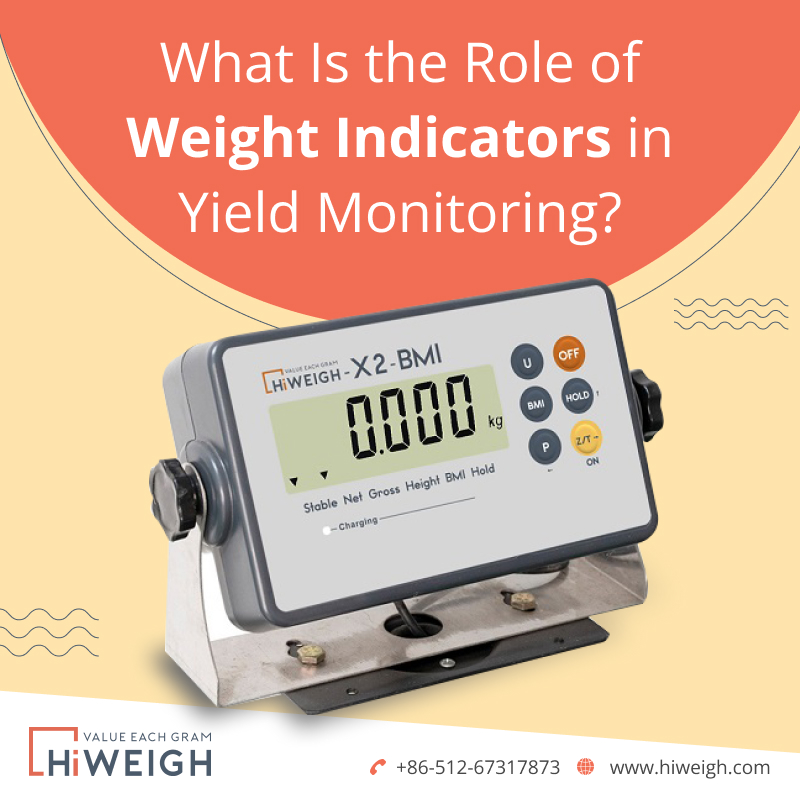With agriculture being a dynamic field where accuracy and efficiency are critical, the capacity to precisely monitor crop yields is extremely important. Throughout the farming cycle, crucial decisions are informed by yield monitoring, which also offers insightful information on crop performance. The weight indicator is a key tool that is used in this process. In this article, we examine the crucial role that weight indicators play in yield monitoring and discuss how they affect contemporary agricultural techniques and crop production optimisation.
What Is Yield Monitoring?
The practice of measuring and evaluating agricultural yields during the growing season and during harvest is known as yield monitoring. Farmers may optimise crop production by identifying possible areas for improvement, gaining insight into yield variability, and making data-driven decisions by monitoring the amount of produce taken from particular locations within a field.



The Evolution of Monitoring Yield
In the past, yield monitoring relied on human measurements and estimations, which made it a labour-intensive and inaccurate procedure. But thanks to technological developments, especially the introduction of precision agriculture, yield monitoring has experienced a radical metamorphosis. With the weight indicator at the centre of this progression, farmers can now monitor yields with remarkable accuracy and efficiency by utilising a variety of advanced instruments and technologies.
The Role of Weigh Indicators
Produce weight indicators, sometimes referred to as load indicators or weigh scales, are instruments used to gauge the weight of crops during harvest or transportation. These gadgets enable real-time crop production monitoring during harvest operations and are connected to harvesting equipment like combines, forage harvesters, and grain carts. Weigh indicators provide farmers with vital information that is the basis for yield monitoring and analysis by precisely weighing harvested crops.
Precision in Action
It is impossible to exaggerate the importance of weight indicators in yield monitoring. With the use of these tools, farmers can accurately measure the quantity of product that is gathered from various parts of a field, allowing for the creation of detailed yield maps that show the spatial variability in crop performance. Equipped with this data, farmers are able to pinpoint regions with high and low productivity, examine contributory elements, including soil properties and agronomic techniques, and adjust management tactics accordingly.
Optimising Resource Allocation
Utilising weight indicators for power yield monitoring allows farmers to allocate resources like insecticides, fertilisers, and water as efficiently as possible. Farmers can adjust input levels to crop requirements by using variable rate application techniques to detect sections of the field with differing yield potential. This focused strategy minimises input waste, lessens the impact on the environment, and improves overall sustainability, in addition to maximising crop yields.
Enhancing Decision-Making
Utilising weight indicators to monitor productivity is essential for both agronomic decision-making and more general farm management and planning. Farmers can spot trends, assess the success of management strategies, and make well-informed choices about crop rotation, variety selection, infrastructure, and technology investments by examining historical yield data gathered over several seasons.
Supporting Precision Agriculture
One of the main components of precision agriculture, a data-driven farming method that seeks to maximise resource efficiency, minimise inputs, and maximise production, is yield monitoring, which is supported by weight indicators. Yield monitoring with weight indicators, as part of a larger array of precision agriculture technology, including GPS guidance systems, variable rate application equipment, and remote sensing technologies, allows farmers to take a proactive, site-specific approach to crop management.
Challenges and Considerations
Although weight indicators have completely changed the way that agricultural productivity is monitored, adequate data management, calibration, and upkeep are essential to their efficacy. Farmers need to make sure that methods for gathering and analysing data are solid and dependable and that weight indicators are calibrated on a regular basis to maintain accuracy. Furthermore, variables in crop density, moisture content, and harvesting circumstances can all have an impact on yield measurement accuracy, which makes data validation and interpretation crucial.
Final Thoughts
Finally, it should be noted that weight indicators play a critical role in yield monitoring. These tools are the foundation of precision agriculture, allowing farmers to measure and examine crop yields with previously unheard-of efficiency and accuracy. Weight indicators enable farmers to maximise crop productivity, increase sustainability, and prosper in the dynamic world of contemporary agriculture by giving them real-time insights on yield variability, facilitating data-driven decision-making, and fostering continuous improvement. The importance of weight indicators in yield monitoring will only increase with the development of technology, opening up new avenues for agricultural practice innovation and optimisation.
